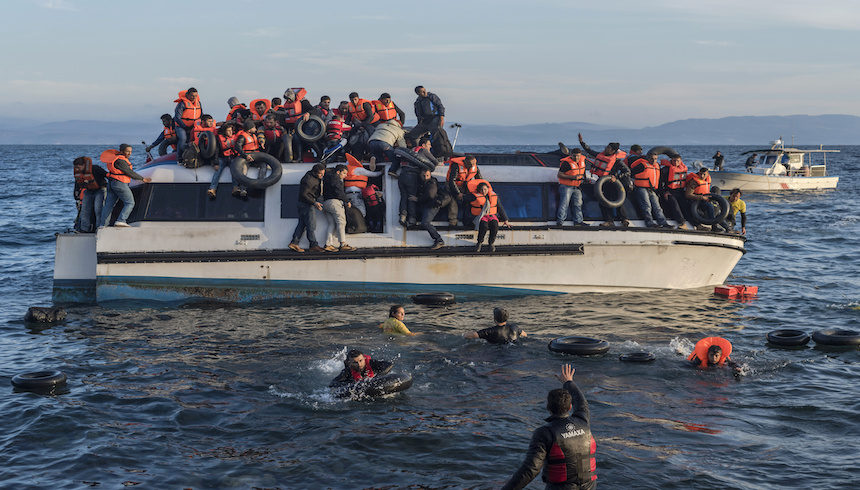Refugee Crisis:
“We Have a Chance To Save Lives. If We Don’t Take It, We May Regret It Like We Did With Alan Kurdi”
–Widad Akrawi
The current refugee crisis is far reaching and a worldwide trouble. Even though, refugees have been forced out of their country since many years, the world has taken note of it only now and rightly so! It is about time people understood the plight of these refugees and what really needs to be done.
Syria
Syria’s civil war is one of the most deleterious human crisis of all times. In the last four years alone, more than 2,20,000 Syrians have lost their lives. It all started with minor protests from as early as January 2011 against the venal government and various human right abuses. The rebellion took its most hideous shape when people were protesting against the Ba’athist government of Bashar-Al-Asaad and the rebellion quickly escalated after the government’s major crack down taking lives of thousands of people and rebels started fighting back against the regime with the help of arms. The Free Syrian Army was the first to take up arms against the government in 2011.
In the meantime, Islamic State of Iraq and Levant (ISIL) was formed, a Jihadist Militant group originating from Iraq who were conflicting with the rebels, started taking control of Syria. By July 2014, they controlled 1/3rd of Syria’s territory and most of its oil and gas production. Several International Organizations had started accusing Syrian Government and ISIL of severe human rights violations. A population of more than 23 million is in need of human assistance consisting of people that are still within Syrian Borders and those that have managed to cross the borders.
According to reports, a majority of the refugees live in Jordan and Lebanon but the crippling infrastructure and resources are only adding to the strain on the Mercy Corps who are addressing the refugees needs since 2013. Some other refugees found a way into Iraq to escape from a newly opened border, but, they are now stuck with the country’s own insurgent conflicts. One of the most dangerous ways is through the Mediterranean Sea from Turkey to Greece and thousands of refugees have chosen this way in spite of the precariousness.
Considering the instability of this route and how refugees are being forced to take this route in the hope that Europe would give them a better future, the abhorrent photo of the lifeless body of Aylan Kurdi, who was just a two year old toddler from Syria who drowned off Turkey last week does not come as a surprise. There are more than 2,000 more migrants who have met their ends in similar circumstances. According to International Organisation for Migration, more than 3,50,000 migrants have taken this route and many more are still coming.
Afghanistan
Afghanistan is the other country that refugees are fleeing from and this is not new. The country has refugee crisis for almost 3 decades now. Starting with Saur Revolution in 1978, Soviet invasion in 1979, civil war in 1990s and the U.S. led war in Afghanistan over the decade has pushed more Afghans to leave the country. The International Security Assistance Force (ISAF) is a NATO-led security mission in Afghanistan established by the United Nations Security Council in 2001. However, ISAF ceased combat operations in 2014, which did not end the trouble for Afghanistan but only marked a new phase of war.
Iraq
Then, there is Iraq where the picture is even more unnerving. Refugees have been leaving Iraq for over 30 years. US invaded and occupied Iraq in 2003 and the radical groups found a new cause to fight. People were angry that US had invaded yet another Muslim Country after Afghanistan and weapons and money were delivered by individuals from Muslim Countries who had never before thought of donating for a cause that was so violent in nature. One-third of Iraq is now in the hands of Islamic extremists and foreign Jihads. These extremists murder, torture and rape with no inhibition.
International Law
It may seem surprising that millions of refugees are homeless in spite of the provision in International Law, that innocent refugees should not be forced to suffer torture, rape, enslavement, death by returning to a country where they will face persecution on the basis of race, religion, national origin, political opinion or social group. However, the problem is, international law allows these refugees to go somewhere other than their own country but where can they go is a question that International Law does not answer. It is more of what countries cannot do than what they ought to do.
Therefore, refugees are always stuck in a country they first arrive in, which is obviously a country that is adjacent to theirs. Hence, most of the Syrian refugees are in Lebanon and Jordan and like I said earlier these countries do not have the infrastructure or the resources to protect so many refugees.
However, the problem arises because International Law does not pose an obligation on any country where the refugees haven’t arrived yet to take affirmative steps to protect these people. Therefore, now that refugees have arrived at the doorstep of Europe, there is a huge befuddlement as to what should be done since, to make matters worse, each state in the European Union has its own set of Asylum Laws.
Due to the significant variance in the laws of each state, most of the European Union states have kept the migrants at bay except Germany that has been generous enough to welcome asylum applicants by changing their asylum rules. European Member States make a distinction between asylum seekers and refugee.
Asylum Seeker is a person submitting a request for refugee status. The member state has to decide if the person qualifies on the basis of a legal procedure. Article 18 of the EU Charter of Fundamental Rights states: The right to asylum shall be guaranteed with due respect for the rules of the Geneva Convention of 1951 and the Protocol of 1967 relating to the status of refugees in accordance with the Treaty on European Union and the Treaty on the Functioning of European Union.
Even though, there is a Common European Asylum System, it does not harmonise the way each state treats refugees and asylum seekers. A lion’s share of the refugee crisis could be solved only when the EU states harmonise their laws as that would help distribute the population of refugees among various states in EU.
Conclusion:
Despite the fact that, refugees have reached the EU Border States, most of the states are unwilling to change their rules to accommodate them. Thus, refusing to help not just the refugees that are stranded in general but, even those that have shown up at their borders. Therefore, one cannot help these refugees by just donating money as there seems to be a larger problem that is staring at them in the face. It’s the political willingness of the rich countries to accommodate these refugees. People need to get rid of their fear of immigrants, they need to realize the plight of these people since the last several years and discern that as human beings, giving them shelter is one of the greatest assuagements that we can do to humankind. The more we make people understand this situation, the more global response can be modeled to reach these people in need.
Picture Courtesy: Wikimedia







